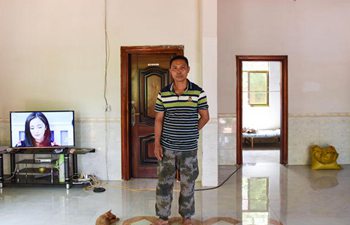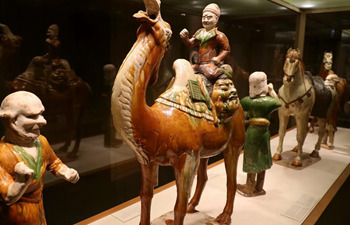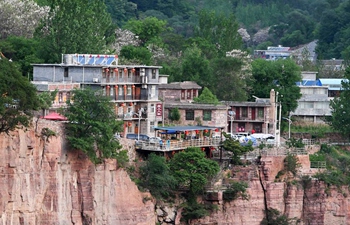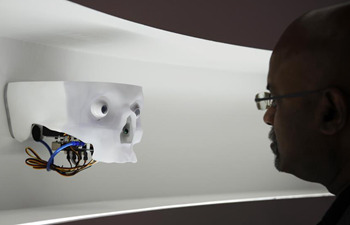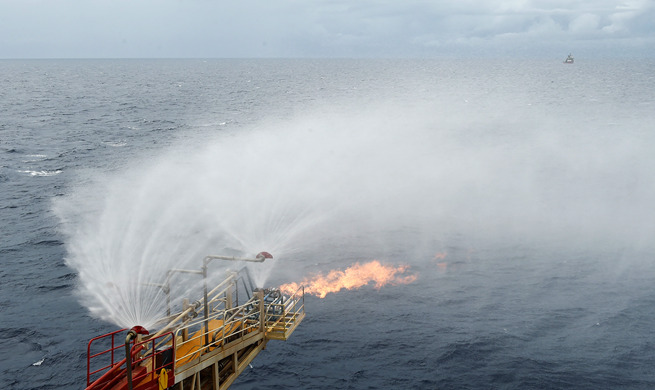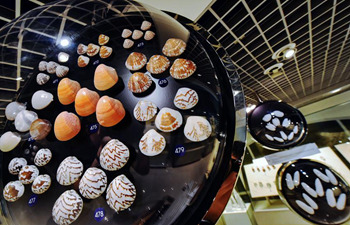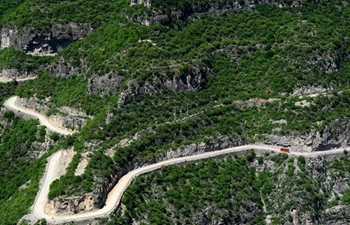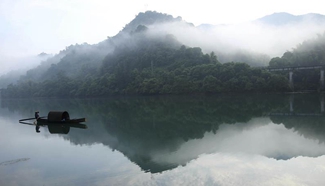SYDNEY, May 19 (Xinhua) -- A cave on a remote island 60 kilometers off the coast of Western Australia was being dubbed the "Australia's Atlantis" on Friday, with a new research confirming the earliest evidence of life on Australia's coast.
The findings from the University of Western Australia have established that Barrow Island was once a bountiful paradise, occupied 50,000 years ago by Australia's aboriginal peoples.
"What is significant is that we've found the remains of coastal occupation, it's not in the interior of Australia where the other sites have previously been found," lead archaeologist Peter Veth told Xinhua Friday.
"It's a unique record and it has been preserved in this extraordinary cave."
The information uncovered has not only revealed the existence of the previously unknown inhabitants, but also helped scientists understand who they were and how they lived.
"We know they were mobile, we know they were extremely well fed, having lived off 40 different species of shellfish and seven or eight species of fauna and lot's of veggies," Veth said.
"We actually have good preservation of the animals around the area -- the kangaroos, the wallabies, the hare-wallabies, the shellfish -- we know what the people ate and we know the artifacts they made, so we have good information to reconstruct the lifeways of those people on the drowned coast of Australia."
Far from a fluke discovery, Veth spent a large chunk of the 1990's surveying the North West Shelf of Australia and the Monte Bello Islands, which are part of the Barrow group but much further out.
"We searched 100 islands and then at the very end, in a couple of small chambers we found bird and shellfish remains," Veth said.
"When we looked at those and we got dates of 30,000 years, which clearly showed there were people living there, using those coastal resources."
After the discovery, Veth received a research grant from the Australian Council of Research and support from Chevron and Western Australia's Parks and Wildlife Service, to explore Barrow Island.
"We had about 12-15 researchers from the U.S. and Australia and labs both in Britain and New Zealand involved," Veth said.
The extensive process combined the most cutting edge digital technology with old fashion archeological techniques.
"When we're surveying on the ground, we are looking for surface materials of stone artifacts, possibly shellfish and other dietary evidence," Veth said.
"If we're looking at material that's buried, we would then excavate using sieves of different sizes, trowels and shoring and stability techniques to stop the deposits slumping as we go deeper."
"Then we sought very carefully."
But radical, innovative technology like optical stimulated luminescence is also used to date things like sediment samples, charcoal and a whole range of other remains.
"We made a laser image of the cave using 1 billion points, then we date it with radiocarbon," he said.
Among the newest scientific techniques utilized by the expedition was a process in which scientists can measure how long it's been since a single grain of sand was exposed to sunlight.
This process allows researchers to find anomalies which could point to signs of human inhabitants.
To confirm the results "we take sets of tests from four different labs and check how reliable the findings are," Veth said.
As for what happened to the original inhabitants of Barrow, it's believed rising sea levels disconnected the island from the mainland around 7,000 years previous, a similar fate to the tale of the lost city of Atlantis.




